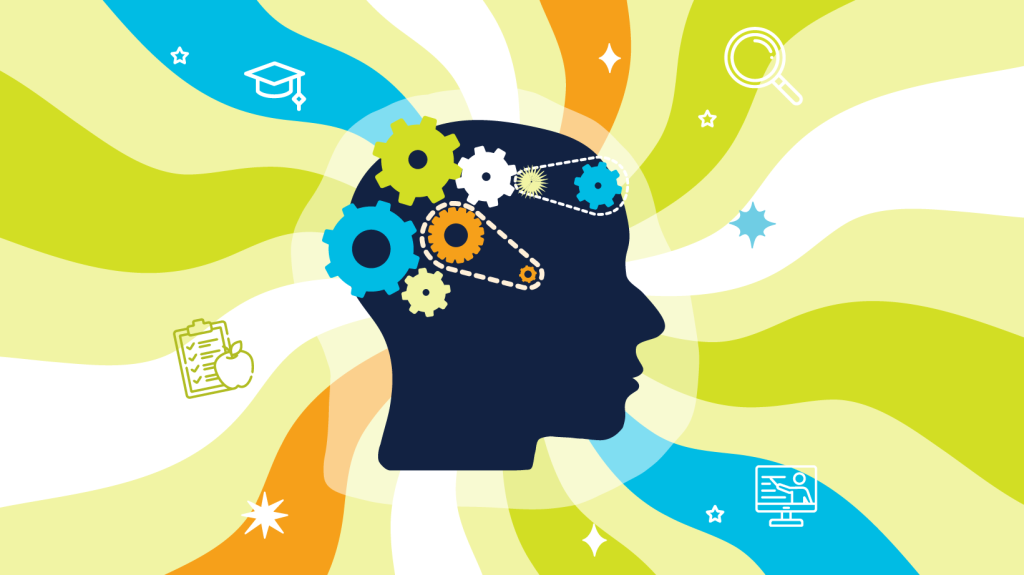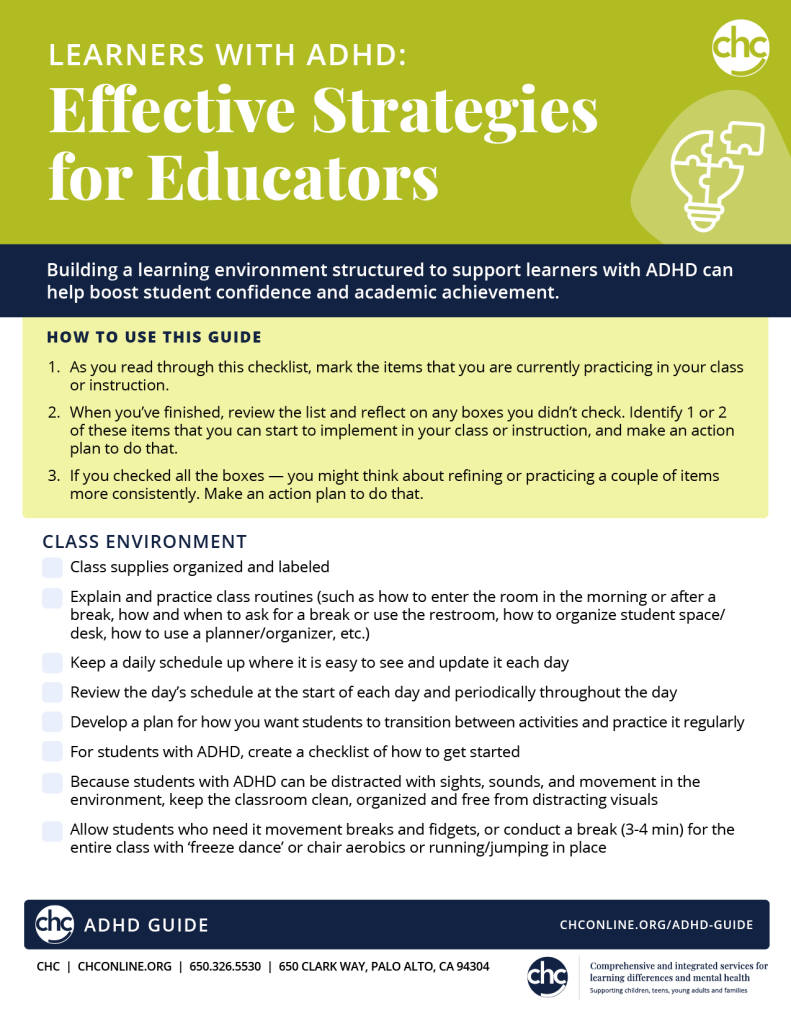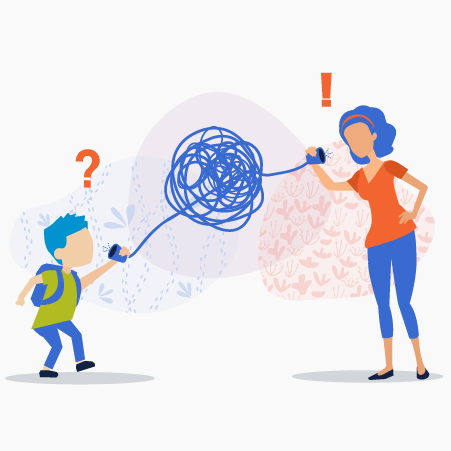Learners with ADHD: Effective Strategies for Educators
Building a learning environment structured to support learners with ADHD can help boost student confidence and academic achievement.


written by Cindy Lopez
Director, Community Connections

reviewed by Melina Foden
Licensed Clinical Psychologist
It’s likely that you have one or more students with ADHD in your class. Students with ADHD can have more difficulty compared to their peers in paying attention, sitting for any period of time, daydreaming, organizing and more.
It’s not possible for these students to simply “try harder” to focus — it doesn’t work that way. In addition, many people with ADHD are creative, innovative, persistent and inventive.
How to Use This Tool
Download the Learners with ADHD: Effective Strategies for Educators checklist to complete offline.
- As you read through the checklist, mark the items that you are currently practicing in your class or instruction.
- When you’ve finished, review the list and reflect on any boxes you didn’t check. Identify 1 or 2 of these items that you can start to implement in your class or instruction and make an action plan to do that.
- If you checked all the boxes, you might think about refining or practicing a couple of items more consistently. Make an action plan to do that.
Learners with ADHD: Effective Strategies for Educators
Download Learners with ADHD: Effective Strategies for Educators.








